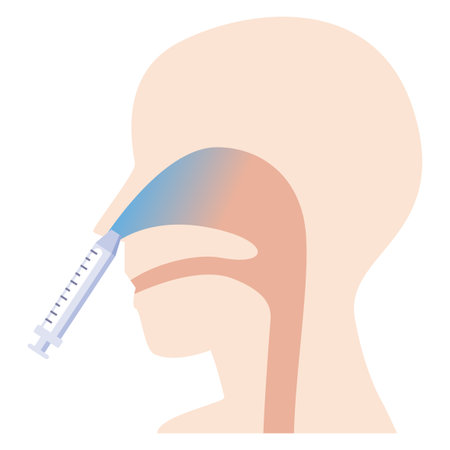Introduction to Medical-Grade Skincare in the UK
Medical-grade skincare is rapidly gaining traction across the United Kingdom, offering consumers products that bridge the gap between traditional cosmetics and pharmaceutical treatments. Unlike over-the-counter skincare, medical-grade products are formulated with higher concentrations of active ingredients and are often supported by clinical research to address specific dermatological concerns such as acne, pigmentation, or ageing. These products are typically distributed through regulated channels, including dermatology clinics, specialist retailers, and authorised practitioners. As British consumers become increasingly discerning about skin health and efficacy, the demand for advanced formulations has surged, prompting both global and homegrown brands to expand their offerings within this segment. Understanding what qualifies as medical-grade skincare—and how these standards differ from conventional beauty products—is crucial for anyone navigating the evolving UK skincare landscape.
2. Key Regulatory Bodies and Frameworks
When navigating the regulatory landscape for medical-grade skincare in the UK, it is essential to understand the primary authorities and legal frameworks that set the standards for safety, efficacy, and compliance. The main bodies involved are:
| Authority | Role | Relevance to Medical-Grade Skincare |
|---|---|---|
| Medicines and Healthcare products Regulatory Agency (MHRA) | Regulates medicines, medical devices, and certain cosmetic products in the UK. | Determines if a product qualifies as a medicine or medical device based on claims and ingredients; enforces compliance with UK law. |
| UK Government/Department of Health and Social Care | Sets national policy and oversees public health regulations. | Provides overarching guidance and ensures harmonisation of standards across all health-related products. |
| Trading Standards | Monitors marketplace practices and enforces consumer protection laws. | Ensures correct product labelling, advertising, and claims are not misleading to consumers. |
| British Standards Institution (BSI) | Develops British Standards, including those applicable to cosmetics and medical devices. | Offers voluntary standards that often serve as best-practice benchmarks for manufacturers. |
The UK’s Post-Brexit Position: EU vs. UK Regulation
Since Brexit, the UK has established its own regulatory pathways distinct from the European Union’s frameworks. However, many principles from EU legislation still influence UK requirements, especially for products marketed in both territories. Key legislative instruments include:
- The Medical Devices Regulations 2002 (as amended): Governs classification, safety, and performance of medical devices, which may include certain advanced skincare products depending on their intended use and claims.
- The Cosmetic Products Enforcement Regulations 2013: Applies to non-medical cosmetics but is relevant where distinctions between cosmetic and medical-grade skincare blur.
- UKCA Marking: Post-Brexit, the UKCA mark replaces the CE mark for many products placed on the GB market, signifying conformity with UK regulations.
Categorisation Challenges: Medicine, Medical Device or Cosmetic?
The categorisation of a skincare product as a cosmetic, medicine or medical device hinges on its composition, intended purpose, and marketing claims. For example:
| Category | Typical Claims/Features | Main Regulator(s) |
|---|---|---|
| Cosmetic Product | Cleanses, beautifies or alters appearance without affecting body functions. | Trading Standards; BSI; MHRA (in borderline cases) |
| Medical Device | Treats or prevents disease; modifies physiological functions via non-pharmacological means. | MHRA; Department of Health and Social Care |
| Medicine | Treats or prevents disease by pharmacological action or metabolic means. | MHRA; Department of Health and Social Care |
Navigating Compliance: Practical Implications for Brands
The distinction between these categories directly impacts required evidence for efficacy, labelling obligations, clinical trials or data requirements, and post-market surveillance. Brands must engage with these authorities early in their product development cycle to ensure seamless market entry and ongoing compliance within the UK’s evolving regulatory environment.
![]()
3. Classification and Legal Definitions
Understanding how medical-grade skincare is classified under UK law is fundamental for both manufacturers and consumers navigating the regulatory landscape. The UK draws a clear legal distinction between standard cosmetics and products that are considered ‘medical-grade’. Under the UK Cosmetics Regulation, a cosmetic is defined as a product intended to be applied to the body for cleansing, perfuming, changing appearance, protecting, or keeping in good condition. These products must not exert a pharmacological, immunological, or metabolic action.
In contrast, medical-grade skincare—sometimes referred to as ‘cosmeceuticals’—encompasses products formulated with active ingredients designed to achieve therapeutic benefits that go beyond basic skin care. In the UK, if a skincare product claims to treat or prevent disease, or to modify physiological functions by exerting an effect on the body, it may fall under the classification of a medical device or even a medicinal product. This distinction is critical: such products must comply with more stringent regulations under the Medicines and Medical Devices Act 2021 and may require approval from the Medicines and Healthcare products Regulatory Agency (MHRA).
The categorisation process often hinges on marketing claims and the intended use of the product. For example, a moisturiser claiming simply to hydrate skin would be classed as a cosmetic, while one making claims about treating eczema or acne could be regulated as a medicinal product. Manufacturers must carefully consider their product’s formulation and associated claims to ensure they are compliant with relevant UK legislation. Getting this right is not only crucial for legal compliance but also builds trust with increasingly discerning British consumers who expect transparency and efficacy from medical-grade skincare offerings.
4. Compliance Requirements for Manufacturers and Distributors
Operating in the UK’s medical-grade skincare sector demands rigorous adherence to compliance frameworks. Both manufacturers and distributors must meet specific regulatory obligations to ensure product safety, efficacy, and transparency in the market. Below is a comprehensive overview of the critical compliance requirements:
Regulatory Guidance and Product Classification
First, brands must establish whether their products are classified as cosmetics, medicines, or medical devices under UK law. The classification determines which regulatory pathway applies and which authority—such as the Medicines and Healthcare products Regulatory Agency (MHRA)—oversees compliance. Engaging with professional legal guidance is recommended for accurate classification.
Labelling Obligations
Accurate and compliant labelling is non-negotiable in the UK. Labelling must provide clear information to consumers and professionals, supporting both informed use and traceability in case of adverse events. Key labelling requirements include:
| Labelling Element | Requirement |
|---|---|
| Product Name | Clear identification of product type and intended use |
| Ingredients List | All ingredients listed in descending order by weight at the time of formulation |
| Responsible Person | Name and address of the UK-based responsible person or distributor |
| Batch Code | For traceability in case of recall or safety concerns |
| Shelf Life/Expiry Date | If less than 30 months; otherwise, indicate “period after opening” symbol |
| Warnings and Precautions | Mandatory safety instructions or restrictions for use |
Safety Assessments and Product Dossier
Before placing any medical-grade skincare product on the UK market, brands must complete a robust safety assessment conducted by a qualified safety assessor. This assessment forms part of a broader Product Information File (PIF), which must be maintained for at least ten years following the last batch release. The PIF should include:
- A detailed product description and intended use
- The qualitative and quantitative composition of the product
- The manufacturing method complying with Good Manufacturing Practice (GMP)
- Evidential documentation from clinical trials or studies where applicable
- A signed safety assessment report from a qualified professional with relevant credentials recognised in the UK/EU
Reporting Obligations: Vigilance and Record-Keeping
Manufacturers and distributors are required to implement systems for post-market surveillance. Any serious adverse events must be reported promptly to the MHRA through established vigilance channels. Regular record-keeping of complaints, recalls, and corrective actions is essential to demonstrate ongoing regulatory compliance during inspections.
5. Challenges, Enforcement, and Common Pitfalls
The regulatory environment for medical-grade skincare in the UK is dynamic and complex, presenting several challenges for both established brands and new entrants.
Enforcement Actions: The Watchful Eye of Regulators
UK authorities, primarily the Medicines and Healthcare products Regulatory Agency (MHRA) and Trading Standards, have stepped up enforcement efforts to ensure only compliant products reach consumers. Recent enforcement actions have included product recalls, fines, and public warnings for misleading claims or non-compliant labelling. These actions underscore the importance of robust internal compliance processes, as regulators are particularly vigilant regarding products making borderline medicinal claims or those lacking appropriate safety data.
Typical Compliance Pitfalls
Many companies inadvertently fall foul of regulations due to common mistakes. Among the most frequent pitfalls are unclear differentiation between cosmetic and medicinal claims, inadequate Product Information Files (PIFs), insufficient evidence to substantiate efficacy claims, and non-compliance with labelling requirements such as missing ingredient lists or failure to provide contact details for Responsible Persons. Overlooking these details can lead to enforcement actions and damage brand reputation.
Evolving Regulatory Challenges
The landscape is further complicated by evolving regulatory expectations post-Brexit. With divergence from EU regulations becoming more pronounced, businesses must closely monitor changes in UK-specific rules, including updates to ingredients lists, notification procedures, and emerging guidance on digital marketing practices. The rise of direct-to-consumer channels and influencer marketing also presents new compliance risks around advertising standards and transparency obligations.
Staying Ahead of the Curve
To navigate this challenging environment successfully, it is essential for industry stakeholders to foster a culture of continuous regulatory vigilance. Regular training, proactive engagement with legal experts, and investment in compliance infrastructure are key strategies to mitigate risks. Ultimately, those who stay informed about enforcement trends and adapt swiftly to regulatory changes will be best placed to thrive in the UK’s rapidly evolving medical-grade skincare sector.
6. Future Outlook and Regulatory Trends
As the UK continues to shape its own regulatory identity post-Brexit, the medical-grade skincare sector is poised for significant evolution. Upcoming regulatory changes are likely to focus on greater transparency, product efficacy substantiation, and enhanced safety standards to align with public health priorities and consumer expectations. The Medicines and Healthcare products Regulatory Agency (MHRA) is expected to introduce more rigorous requirements around clinical evidence and ingredient disclosures, especially for products that blur the line between cosmetics and medicines.
Brexit implications have already begun to reshape the industry. The UK’s divergence from EU cosmetic regulations means brands must now navigate a separate compliance pathway, including unique product notification processes and labelling requirements. Companies importing or exporting medical-grade skincare will need to closely monitor developments in both UK and EU regulations to remain competitive and compliant.
Looking ahead, anticipated trends influencing the sector include a move towards personalised skincare solutions under stricter oversight, increased scrutiny of “cosmeceutical” claims, and a push for digital traceability across supply chains. There is also growing momentum behind sustainable packaging mandates and restrictions on certain ingredients deemed environmentally harmful. Stakeholders should remain agile, investing in robust regulatory intelligence and cross-functional collaboration to keep pace with these dynamic shifts within the UK’s medical-grade skincare landscape.

